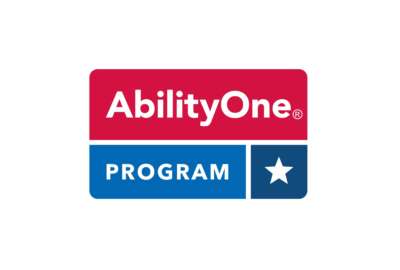Hubbard Radio Washington DC, LLC. All rights reserved. This website is not intended for users located within the European Economic Area.
Contractors say new AbilityOne Commission rule could undermine people with disabilities
A new rule is expected any time now that will overhaul how the Defense Department buys from the Ability One program. That is the vehicle for non-profit employer...
A new rule is expected any time now that will overhaul how the Defense Department buys from the Ability One program. That is the vehicle for non-profit employers of people with disabilities to deliver goods and services to the government. Contractors under the Ability One program worry the new rule will hinder a chief program goal of helping those very employees. To discuss concerns, the Federal Drive Host Tom Temin spoke with Larysa Kautz, the President and CEO of Melwood, which supports children, youth, and adults with disabilities to “work and play where and how they choose.”
Interview Transcript:
Tom Temin Briefly give us where Melwood fits within the apparatus. That is the Ability One program serving federal agencies and the Defense Department.
Larysa Kautz Sure, Tom. We are one of the tops of the 400 agencies around the country that serve as Ability One contractors. We’re a nonprofit. We’re a leading employer advocate and preferred provider for people with disabilities. We have about 60 different federal contract sites around the D.C. region.
Tom Temin And what types of goods and services do you generally operate with?
Larysa Kautz So we do custodial, we do landscaping. We actually grow all of the flowers for the Kennedy Center in our greenhouses, and we do all the landscaping there. We have a top-secret facility clearance because we make sure that the Attorney General’s office is clean. And the State Department, Fort Meade, we do building maintenance. I like to say that we help run the government.
Tom Temin All right, well, next time I’m at the opera, I’m going to take a close up look at the flowers at the Kennedy Center. And I’ll say, I know where those came from. There is a new rule that is about to come out any day now from the Defense Department. I guess it is from the controlling authorities for Ability One. And you’re concerned that this could make it tougher for companies, nonprofits like yours and disrupt long standing practice? What in general do you expect the rule to look like?
Larysa Kautz So, Tom, you know, the DoD did a review of the Ability One program a few years ago. It was very in-depth, and it had proposals to modernize the program, one of which is to add, a level of competition to the program to ensure that the contractors are performing with excellence and that there’s a chance to do a price competition potentially every five years for the contracts. Now, this has been reviewed by the Ability One Commission and the proposed rule, which is now in its final stages and expected to come out soon, proposes to compete contracts. At least the proposed rule proposes to compete contracts that are above $2 million a year, which will involve a very, very large number of contracts in the program and basically focuses on price, as the main differentiator between non-profits competing for that. It does not look at the biggest bottom line value proposition of the program, which is job creation. And there’s this trade off in the program between price and employment. If we lower our price to the lowest possible amount, we will be hiring the people who are least significantly disabled, who are more productive will be cutting costs with respect to coaching and job coaching and counseling and accommodations. You know, if we really go to the bottom line of lowering price at any cost, it’s not going to help achieve the mission of the program. The program’s bottom-line value is there is a return on investment to the government of this program beyond just the prices that the agencies are spending for the services. We did a study with Virginia Tech last year that showed that the program reduces government spending by about $38,000 per person who has been employed and served by Melwood. But this rule doesn’t take into an account any impact and calculations of that value proposition and what impact it will be to have a lowest price, technically acceptable kind of a shootout between the non-profits and how that will impact the general return on investment. Right.
Tom Temin And that $2 million that you mentioned, contract threshold, that is a significant reduction from the requirement for periodic competition now, which is 10 million.
Larysa Kautz So the 898 panel, which was the DoD panel that proposed competition, they were the ones that set the proposed $10 million floor because, you know, they know that competition is a disruptor, right? This program was created to have long term, stable jobs for people with disabilities. And as long as the nonprofit is performing the work satisfactorily, we keep the contracts. We don’t compete them every five years. And so, they knew that with this change we would have to hire business development people and pricing experts and really fight for the contracts, which in my opinion is a waste of charitable dollars since we’re all nonprofits and we take the margin on these contracts, and we reinvest it in the community. And so, they set a $10 million floor. And they also said that social impact would be considered in the value proposition of the competition. Now, that has been completely left out of this proposed rule, nearly 100 organizations, both the contractors and disability organizations and others provided comments to the proposed rule with respect to both that threshold and the social impact not being part of it. And I’m just hoping that in the final rule that we see some move from the proposed rule back to the way that the DoD originally had proposed it.
Tom Temin We were speaking with Larysa Kautz. She’s the president and CEO of Melwood. And traditionally, people working in the Ability One contractors because they’re disabled, sometimes severely so, have received much lower wages than are prevailing for people that are fully abled under, you know, federal labor law. And there’s been a move in recent years to raise the level of pay that those people receive because reasoning is, well, they’re working and they’re providing value. So why shouldn’t they get the same minimum wage as everyone else? Those two ideas seem to be in collision then, price competition plus, you know, dramatic wage raises for people with disabilities working for the contractors.
Larysa Kautz Absolutely, Tom, and I love that you bring this up, because it’s exactly what the problem is with this proposed regulation. It’s only looking at the price to the customer, and it’s trying to drive down the price to the federal agencies. Meanwhile, in the background, there are policy shifts. There are other regulations being proposed to the program to modernize it, to make sure that everybody’s being paid a competitive wage, to make sure that we shore up as non-profits, the vocational support and counseling that we do. A lot of those things are now becoming a priority and a requirement of the program. But at the same time, this regulation doesn’t take any of that into account. If there was a balance in the regulation where social impact and price and technical proposal and past performance, if all of those were weighted equally, then the government would truly get the best value and the best benefit from each of those contracts. But really, truly just focusing on price, I think it doesn’t acknowledge the real mission of this program, which is good jobs for people that are the most significantly disabled.
Tom Temin And in a practical sense, these are not big-ticket items in defense terms. I mean, it’s not like you’re supplying them the next generation of bomber, which has, you know, $1 trillion lifecycle cost. It’s services like you say, landscaping, cafeterias, flowers, pens and pencils, that kind of thing.
Larysa Kautz It’s significantly less than 1% of the DoD’s budget. I mean, we’re talking about half of a percent of the DoD budget. And there’s been so much time and effort and energy involved to really think through how to put competition into this program when I just, you know, we just did a renegotiation for our Fort Meade contract. We saved the government $24 million over a five-year period by sitting across the table, opening up all of our books, really talking to them about the services that they need on the ground. And we even, you know, we got a write up in an article that said that they really were extremely satisfied and surprised by sort of that open kimono type of negotiation. That’s what’s possible in this program, and that’s how this program was designed to run. I think by moving backwards to less transparency, to more competition with people bidding bare minimum amounts for the scope of the contract as it’s drafted, which then leads to misperceptions, modifications to the contracts, you know, actually more money in the long run that’s wasted in contract administration and right sizing the contract after the fact. I just wish that that had been investigated and quantified and thought about. But there really isn’t much in this rule that shows a cost benefit calculation in those terms.
Copyright © 2024 Federal News Network. All rights reserved. This website is not intended for users located within the European Economic Area.
Tom Temin
Tom Temin is host of the Federal Drive and has been providing insight on federal technology and management issues for more than 30 years.
Follow @tteminWFED





